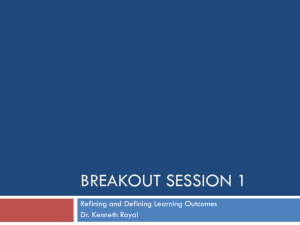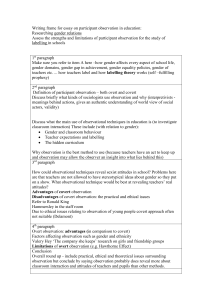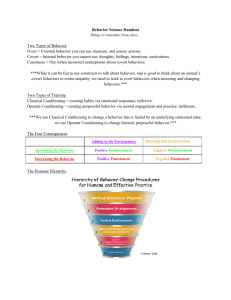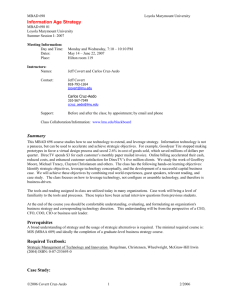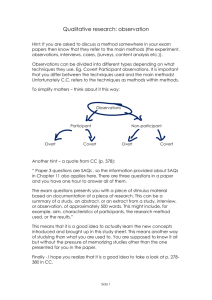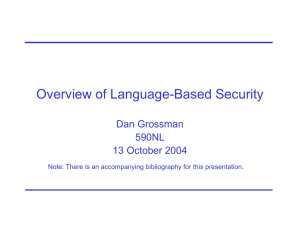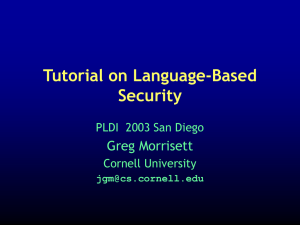Information Flow
advertisement
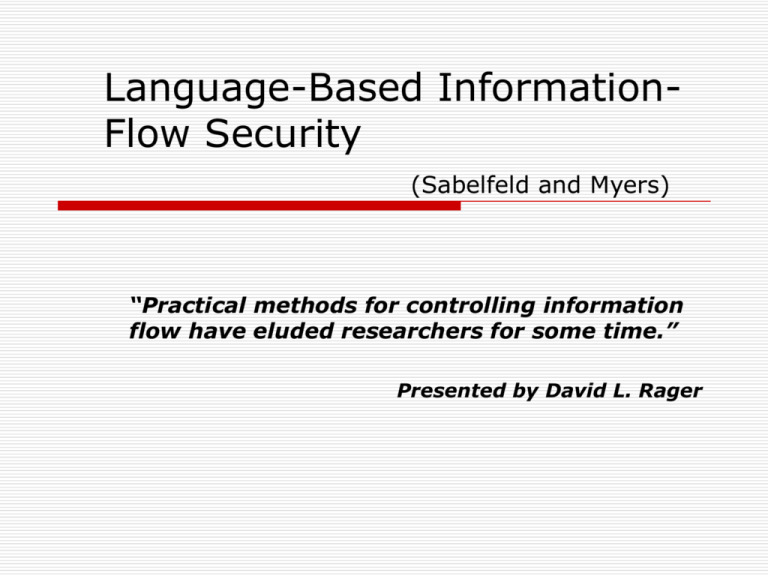
Language-Based InformationFlow Security (Sabelfeld and Myers) “Practical methods for controlling information flow have eluded researchers for some time.” Presented by David L. Rager “Conventional” Approach Access control lists (ACLs) Checks release of data but not data propagation What happens if a host becomes unknowingly corrupted? Approach is fundamentally doomed Firewalls Anti-virus Encryption Language-based Attempts Java Bytecode verifier Sandbox mode Stack inspection Not intended to control information flow, and therefore insufficient The “New” Approach Information-flow policies “confidentiality policies we wish to enforce” “A natural way to apply the well-known systems principle of end-to-end design” Information-flow controls Mechanisms that implement the above policies Terminology Confinement – the ability to prevent capabilities (and authority) from being transmitted improperly Noninterference – no data visible publicly is affected by confidential data “High” security versus “low” security – the idea that some code and data is associated with being inaccessible and other code and data is public (these are not technical terms) Covert Channels Channel – a mechanism for signaling information through a computing system Covert channel – a channel whose primary purpose is not information transfer Types of Covert Channels Implicit flows – signal information through the control structure of a program Termination channel – signal information through the termination or nontermination of computation Timing channel – signal information through the time at which an action occurs rather than through the data associated with the action Types of Covert Channels (cont’d) Probabilistic channel – signal information by changing the probability distribution of observable data Resource exhaustion channel – signal information by the possible exhaustion of a finite, shared resource Power channel – embed information in the power consumed by the computer Four Directions of Language-Based Security Enriching expressiveness of the language Exploring impact of concurrency Analyzing covert channels Refining security policies Four Directions of Language-Based Security Expressiveness Polymorphism The function h can be overloaded to have different definitions depending on whether its context is high or low Functions SLam is based off the lambda calculus and proposes a type system for confidentiality and integrity Expressiveness (cont’d) Exceptions Path labels can be used to allow finer-grained tracking of implicit flows caused by exceptions Objects JFlow language extends Java with a type system for tracking information flow Barthe and Serpette created an OO language based on Abadi-Cardelli functional object calculi and show their type system enforces noninterferance Four Directions of Language-Based Security Concurrency Nondeterminism Consider the observable behavior of the program to be the set of its possible results Secure if high inputs do not affect the set of possible low outputs Possibilistic security Concurrency Thread concurrency If two high security programs execute in parallel, they can “do evil” Example High assurance level program 1: h:=0; l:= h // secure since 0 is a public constant High assurance level program 2: h:=h’ // if this program interleaves in program 1’s execution, then h’ will become public Concurrency Distribution Messages are exchanged and these exchanges can often be observed Often distributed systems don’t completely trust each other Components of distributed systems can fail (or be subverted) Four Directions of Language-Based Security Covert Channels Termination Channels If an attacker can observe termination some programs are insecure Ex: while h = 1 do skip Solution No while loop may have a high guard No high conditional may contain a while loop in its branch Covert Channels Timing Channels If an attacker can observe termination some programs are insecure Ex (Clong is a series of time consuming operations): if h = 1 then Clong else skip One solution to this example No high conditional may contain a while loop in its branch Wrap each high conditional in a protect statement whose execution is atomic Practical example: RSA encryption attack[101] Covert Channels Probabilistic Channels Ex: l:=PIN []9/10 l:=rand(9999) []9/10 means perform the left side 90% of the time and the right side 10% of the time Possibilistically secure Why isn’t it probabilistically secure? Four Directions of Language-Based Security Security Policies Declassification Noninterference rejects downgrading of security levels Think of cryptography Admissibility Explicitly states which dependencies are allowed between data (including those caused by downgrading) An admissible program has no other information flows than those intended by the protocol specification Quantitative security A limited number of information leaks is acceptable Open Challenges System-wide security Correctly integrating particular security implementations into a system is hard Certifying compilation Must trust the type checkers and compilers Remember Robert’s Openmcl presentation? A solution: proof carrying code Abstraction-violating attacks Ex: cache attacks Dynamic policies Need to support the changing of permissions across the lifetime of data Conclusion Conventional methods of security (access control lists, virus detection, firewalls) insufficient Four Directions of Language-Based Security Enriching expressiveness of the language Exploring impact of concurrency on security Analyzing covert channels Refining security policies

